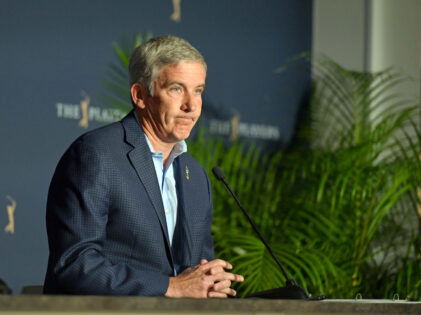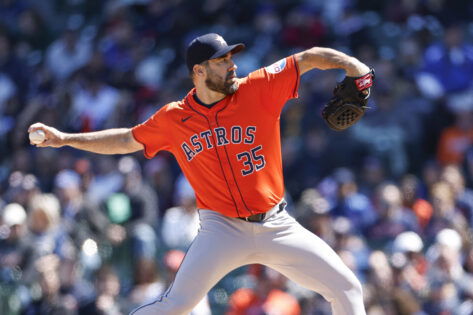Professional golf has long been plagued by slow play, which irritates both spectators and players. More specifically, when talking about the PGA and LPGA Tour. In 2024, elite players, including Charley Hull and Nelly Korda, expressed concerns when the third round of The Annika took more than five and a half hours. Similar to this, the 2024 U.S. Open also faced issues with slow play, which drew harsh criticism.
In early 2025, the LPGA implemented a new pace-of-play regulation that penalizes players who exceed time limits with fines and stroke penalties. This proactive strategy has received recognition for successfully resolving the problem. On the other hand, the PGA Tour’s approach to addressing sluggish play has come under scrutiny, particularly because it appears to target lower-tier players disproportionately. A broader conversation about uniformity and fairness in the application of pace-of-play regulations has been sparked by this discrepancy. As the PGA Tour leadership is criticised for taking too long, let’s take a closer look at how the LPGA’s daring actions are changing the game.
Jay Monahan & Co. Under Fire as LPGA Leads the Way
LPGA Tour player Sarah Schmelzel praised the LPGA’s new pace-of-play rules, which penalize poor play with fines and stroke penalties, in an open interview on GOLF’s Subpar podcast. She emphasized that players have already proactively adjusted their habits in response to the potential penalties. “I do think that even though it hasn’t been in effect yet, that people are practicing, so they’re not getting into a situation this week where they could get fined,” Schmelzel stated.
She said that players are now more aware of their speed since stroke penalties were implemented, saying, “When you get warned, it means you are slow, it means to speed up.” Schmelzel also emphasised the use of rangefinders, which help maintain speed and confirm yardages while adding a step to the process. The LPGA introduced a tiered penalty system on March 27, 2025: a fee for exceeding the allotted time by 1–5 seconds, a one-stroke penalty for exceeding by 6–15 seconds, and a two-stroke penalty for exceeding by 16 seconds or more. This initiative aims to enhance the efficiency and enjoyment of competition for both competitors and spectators.
Positive outcomes have already been obtained from this proactive strategy. The success of the policy was demonstrated during a recent event when the final round was finished in a median time of three hours and forty-eight minutes. These developments have been made possible in large part by the leadership of interim commissioner Liz Moore. Both players and spectators have praised her dedication to improving slow play and increasing the tour’s popularity.
The PGA Tour’s strategy, on the other hand, has drawn criticism for its lack of urgency and for focusing on lower-tier players. Co-hosts of the Subpar podcast Drew Stoltz and Colt Knost voiced their frustration, saying, “The PGA Tour wants it to improve, so they’re gonna trot it out in a trial basis with like mini tour guys that can’t feed their families, basically.” Schmelzel also admitted that although the LPGA has used rangefinders to help with play speed, they are not a complete answer. She emphasized the importance of adapting to changing regulations to remain competitive. This difference in strategy has spurred a wider discussion regarding the necessity of uniform and equitable pace-of-play regulations throughout professional golf. The LPGA had another reason to rejoice this week amid the ongoing pace-of-play controversy: a stunning victory that is already drawing attention on the tour.
PGA tour’s experiment: Rangefinders at RBC Heritage
During the 2025 RBC Heritage tournament, the PGA Tour permitted the use of distance-measuring gadgets in an attempt to combat slow play. To assess the effectiveness of rangefinders in speeding up play, a six-month trial phase was initiated. Players’ reactions were not quite uniform. Some, like Brian Campbell, said that using rangefinders made the game faster and “felt as if he were running,” but others were not convinced of their effect. Notably, Scottie Scheffler expressed scepticism regarding the device’s ability to reduce slow play significantly.
2WPHG35 ORLANDO, FL – MARCH 07: Scottie Scheffler of the United States reacts after a missed putt at the 12th hole during the first round of the Arnold Palmer Invitational presented by Mastercard at Arnold Palmer Bay Hill Golf Course on March 07, 2024 in Orlando, Florida. (Photo by Joe Robbins/Icon Sportswire) (Icon Sportswire via AP Images)
Notwithstanding the differing views, the PGA Tour’s readiness to test new technologies demonstrates that it understands the problem of sluggish play and is seeking workable solutions. Future regulations intended to expedite play on the tour are likely to be influenced by the results of this trial phase.
The PGA Tour’s experimental strategy highlights the ongoing challenges in addressing this persistent issue, while the LPGA sets a precedent with its stringent penalties for slow play. Whether these measures can lead to a long-term shift in the pace of professional golf will become clear in the upcoming months.
The post ‘Can’t Feed Their Families’: Jay Monahan Faces Heat for Sacrificing Struggling Pros to Solve PGA Tour Problem appeared first on EssentiallySports.



